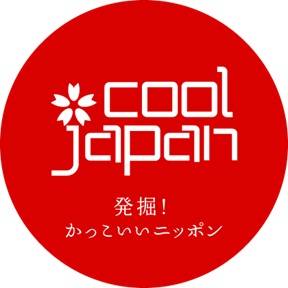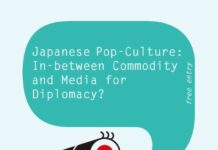HM: In your undergraduate thesis, you argued that Cool Japan is a competitive advantage for Japan. What makes Cool Japan a competitive advantage for Japan compared to other countries? Or how does Japan attempt to make Cool Japan its competitive advantage?
BY: Regarding competitive advantage, Japan believes in the uniqueness and quality of their products to be their competitive advantage. It’s not just about being more advanced.
How then Cool Japan becomes their competitive advantage? I think it’s more because of diversity.
When I began my research about Cool Japan in 2012, and even until recently, many have said that South Korea has more advantage with their Korean Wave. The argument goes that K-Pop and K-drama are more popular today. My response to that is simple: trends have their cycles! K-Pop and K-drama would eventually reach a saturation point among the audience. While outside of K-pop and K-drama, South Korea is developing its cosmetics industry and tourism. That’s where Korea plays their game.
Then what is Japan’s advantage? Remember that Cool Japan consists of 18 industries. That means, there are a variety of products that these 18 industries can provide and they can support each other. Even that recognized list of 18 industries does not include cuisine and tourism. Integration and variation are Japan’s advantage. Cool Japan doesn’t appear to be as popular as Korean Wave, but I believe it would be more sustainable with its nature that covers many aspects.
Further, Cool Japan does not go against or directly competing with others in popular culture. In many cases, Japan conducted partnerships/cooperation. Like actors/actresses exchange with South Korea and China, cooperation in animation production with Malaysia and India, cooperation in developing various bottled tea and instant noodles in Indonesia, and so forth. This allows Japan to enter various countries through softer means.
TC: I’m interested in what Indonesia can learn from Cool Japan, considering that recently our government just formed Badan Ekonomi Kreatif/Creative Economy Agency. Though in the previous administration there has been the Kemenparekraf/Ministry of Tourism and Creative Economy as well.
BY: Actually, when I began my research, there was already an indication that Japan and Indonesia will cooperate in the creative industry sector. Such plan was iterated by the former Minister of Tourism and Creative Economy Mari Elka Pangestu.
And one of the clear indicators for this in the recent news about the Creative Economy Agency is the list of industries recognized as Indonesia’s creative industries. They are quite similar to Cool Japan’s list of creative industries.
What can be learned, then? I think the most obvious one is the model of government management, particularly to push for the products of those creative industries to be capable of competing in the global market. If managed well, small and medium enterprises could grasp the good momentum to enter a broader market and encourage the processing of raw materials and improve value added. This is also supported with the richness of national culture that our country possesses and the growth of Indonesian popular culture products such as software/games, animation, or local films that are gaining recognition.
HM: All right, I think that’s enough about Indonesia’s position for now. Perhaps we could discuss this in more details in another session. Next, I want to ask another question, why does it seem that the Japanese government was rather slow in recognizing the potential of their country’s popular culture and to take advantage of them?
BY: Golden Age theory and scattered values.
Since the 1970, automobiles and electronics are the champions of Japanese industries. Japan at the time was in a “Golden Age/Golden Era.” And thus, for them automobiles and electronics are everything. Even after the economic bubble, for about a decade Japan still focus its struggles to rejuvenate the glory of their automobiles and electronics industries.
On the other hand, in the past, creative industries were still scattered and stood on their own. The overseas transaction value of Japan’s publishing industry was still low, the audience for anime and manga wasn’t broad enough, the sales of merchandise were relatively limited, and the middle class market wasn’t as big as it is now.
Because of those factors, the industries that are now recognized within Cool Japan did not possess significant potential for strategic management by the Japanese government in the past. Plus, until the past decade, cultural diplomacy still emphasized traditional cultures.
HM: Now the last question; in your observation, how is Cool Japan today, especially compared to 2013 when you worked on your undergraduate thesis on Cool Japan? And how is the prospect for the development of Cool Japan from now on?
BY: Hmm… as the fans of Japanese culture has begun to realize, Cool Japan is being actively propagated. The planned projects are also underway. And approaching Hollywood to adapt Japanese contents have actually been done. Japanese popular culture increasingly becomes a commodity in ASEAN, India, the Middle-East.
Indonesia as of now has become one of the major markets for Cool Japan. JKT48, AFA, exhibitions, manga schools, etc.
And for the future? Cool Japan will still grow. Japan will still expand its creative industries to reach many countries. New models of transnational enterprises such Rakuten.com, UNIQLO stores, Halal-certified Japanese dining establishments, and more Japanese contents via Hollywood will become a part of life in ASEAN societies and also other countries. As long as they remain consistent, these things will become part of global lifestyle and culture, not just mere trends. And from here, Japan can sustainably bank on positive image and economic profits.

HM: All right, let us thank Bagus Yudoprakoso for taking his time to share his knowledge on Cool Japan. And I also thank Ganesh Aji Wicaksono, Jochanan Lintang and Tangguh Chairil for participating in this discussion. I apologize that because of our limited time, not all questions can be answered in this session. That’s all for today’s discussion, see you later in another occasion.
Suggestions for further reading
- McGray, Douglas. “Japan’s Gross National Cool.” Foreign Policy, May 1, 2002. http://foreignpolicy.com/2009/11/11/japans-gross-national-cool/
- “Proposal of the Public-Private Expert Panel on Creative Industries.” May 12, 2012. http://www.meti.go.jp/english/press/2011/0512_02.html
- ——-. “The Cabinet has Approved a Cabinet Order Specifying the Effective Date of the Act on Establishment of the Japan Brand Fund.” September 10, 2013. http://www.meti.go.jp/english/press/2013/0910_01.html
- “Cool” Japan’s Economy Warms Up. March 2005. https://www.jetro.go.jp/en/reports/market/pdf/2005_27_r.pdf
- “Creative Industry: a key to solidify bases for regional cooperation in Asia.” Hong Kong, November 15, 2004. http://www.mofa.go.jp/region/asia-paci/speech0411.html
- ——-. “Inauguration Ceremony of Anime Ambassador.” March 19, 2008. http://www.mofa.go.jp/announce/announce/2008/3/0319-3.html
- ——-. “Introduction of the KAWAII Ambassadors,” March 12, 2009. http://www.mofa.go.jp/announce/press/2009/3/0312.html
- ——-. “World Cosplay Summit 2013 Conferment of Foreign Minister’s prize.” August 27, 2013. http://www.mofa.go.jp/policy/culture/page5e_000020.html
- Grunebaum, Dan. “Is Japan losing its cool?” The Christian Science Monitor, December 8, 2012. http://www.csmonitor.com/World/Asia-Pacific/2012/1208/Is-Japan-losing-its-cool/(page)/2
- Snow, Nancy. “Uncool Japan: Japan’s Gross National Propaganda.” Metropolis, November 7, 2013. http://metropolis.co.jp/features/the-last-word/uncool-japan/
- Cool Japan policy page in METI’s website: http://www.meti.go.jp/english/policy/mono_info_service/creative_industries/creative_industries.html
- Website for Cool Japan TV program in NHK: http://www6.nhk.or.jp/cooljapan/en/index.html
- Cool Britannia website: http://www.coolbritannia.com/
The Indonesian Anime Times | this post was translated from the corresponding article in KAORI Newsline







